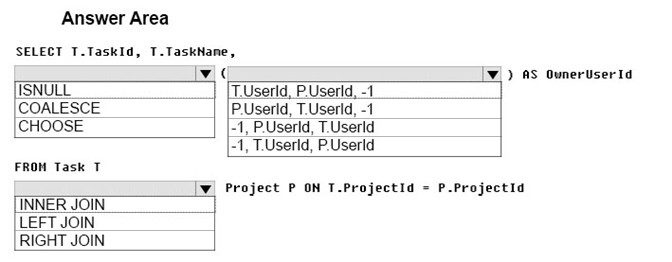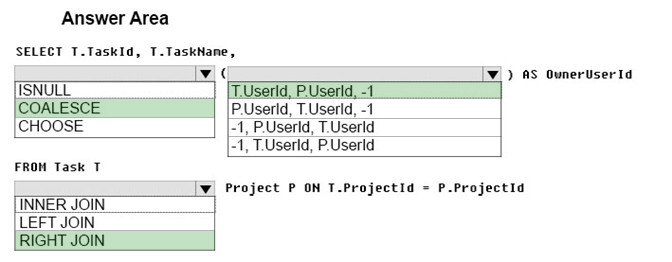

HOTSPOT -
Note: This question is part of a series of questions that use the same scenario. For your convenience, the scenario is repeated in each question. Each question presents a different goal and answer choices, but the text of the scenario is exactly the same in each question in this series.
You query a database that includes two tables: Project and Task. The Project table includes the following columns:

You need to identify the owner of each task by using the following rules:
✑ Return each task's owner if the task has an owner.
✑ If a task has no owner, but is associated with a project that has an owner, return the project's owner.
✑ Return the value-1for all other cases.
How should you complete the Transact-SQL statement? To answer, select the appropriate Transact-SQL segments in the answer area.
Hot Area:

Tazul
Highly Voted 5 years, 11 months agochaoxes
Highly Voted 5 years agoAnirudh_net
Most Recent 3 years, 4 months agoOooo
4 years, 11 months agostm22
5 years agoJoeyboats
5 years agoBacky
5 years, 1 month agoCristianCruz
5 years, 2 months agoAndy7622
4 years, 8 months agoAnette
5 years, 2 months agotrickytree
5 years, 2 months agoHamburger
5 years, 4 months agoRobintang0924
5 years, 6 months agomlourinho
5 years, 8 months agoprakash101179
5 years, 10 months agoTr4ckz
5 years, 11 months agoLuzix
4 years, 8 months agoHoglet
4 years, 8 months agoM4x
5 years, 11 months ago